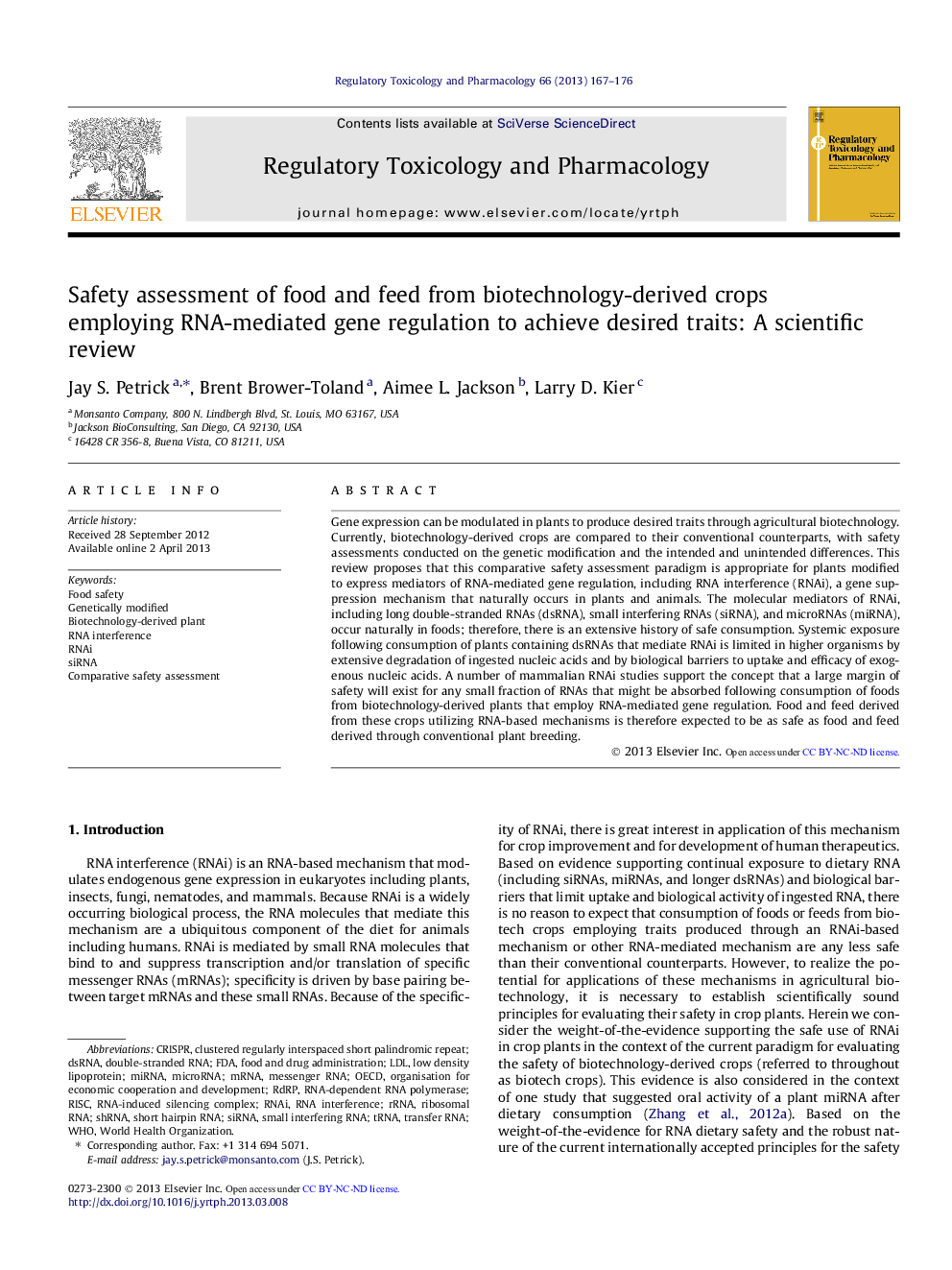| Article ID | Journal | Published Year | Pages | File Type |
|---|---|---|---|---|
| 5857418 | Regulatory Toxicology and Pharmacology | 2013 | 10 Pages |
â¢Nucleic acids, including double-stranded RNAs, have a history of safe consumption.â¢Activity of ingested nucleic acids is limited by biological barriers.â¢Delivery is a major hurdle for RNA drugs; these drugs are generally well tolerated.â¢A large safety margin is anticipated for dsRNAs from biotech crops employing RNAi.â¢The existing biotech crop safety assessment paradigm applies to crops using RNAi.
Gene expression can be modulated in plants to produce desired traits through agricultural biotechnology. Currently, biotechnology-derived crops are compared to their conventional counterparts, with safety assessments conducted on the genetic modification and the intended and unintended differences. This review proposes that this comparative safety assessment paradigm is appropriate for plants modified to express mediators of RNA-mediated gene regulation, including RNA interference (RNAi), a gene suppression mechanism that naturally occurs in plants and animals. The molecular mediators of RNAi, including long double-stranded RNAs (dsRNA), small interfering RNAs (siRNA), and microRNAs (miRNA), occur naturally in foods; therefore, there is an extensive history of safe consumption. Systemic exposure following consumption of plants containing dsRNAs that mediate RNAi is limited in higher organisms by extensive degradation of ingested nucleic acids and by biological barriers to uptake and efficacy of exogenous nucleic acids. A number of mammalian RNAi studies support the concept that a large margin of safety will exist for any small fraction of RNAs that might be absorbed following consumption of foods from biotechnology-derived plants that employ RNA-mediated gene regulation. Food and feed derived from these crops utilizing RNA-based mechanisms is therefore expected to be as safe as food and feed derived through conventional plant breeding.
